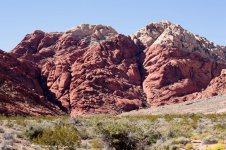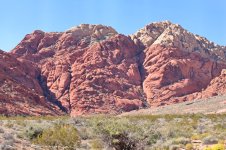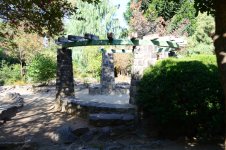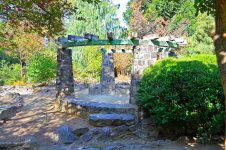Crash_of_43
Senior Member
I want to shoot some old turn of the Century buildings and motorcycles at bike nights in the HDR range .....will my NIKON D-3200 do that ? and IF so please tell me how to seek the settings too...Thank You
You'll need to take your multiple exposures, then use something like the Lightroom or Photoshop "HDR Merge" to create the final image. Best way to accomplish this with the D3200 is to shoot from a tripod, so that you can keep the images aligned well. If I recall correctly, Lightroom will align them the best it can before merging.Describe the " then merge them IN post processing " ! Thanks
I want to shoot some old turn of the Century buildings and motorcycles at bike nights in the HDR range .....will my NIKON D-3200 do that ? and IF so please tell me how to seek the settings too...Thank You
Microsoft has put out some decent photo programs for us to use, and at a really good price.The D3200 doesn't have any intrinsic HDR capabilities. You need to manually produce a set of images at different exposure levels, and then use an external software program to produce an HDR image therefrom.
The software that I use for this purpose is Geodesic High-Dynamic-Range Photography Tool (hereafter referred to as “GeoHDR” for short)—which is free from Microsoft's web site. It requires the 64-bit version of Windows 7 or higher.
I will let you in on a bit of a secret.
Others will tell you that you need to take three separate pictures, at different exposure settings; and since the D3200 does not have any automated bracketing, you'll have to do it all manually. Some times, this may be true, anyway, depending on how much dynamic range there is in the scene that you're photographing.
The secret is that the D3200's sensor has a much wider dynamic range than can be reproduced in .JPG files, and that the “raw” .NEF files contain this full dynamic range. There may be some program out there that can produce a decent HDR image directly from a single .NEF file, but I haven't found it.
GeoHDR, unfortunately, won't read .NEF files. As far as I know, it will only accept .JPG files as input.
But in the camera, you can produce .JPG files at different exposure values, from a single .NEF file.
Make sure you have your “Image Quality” set to either “NEF (RAW)” or to “NEF (RAW) + JPEG fine”, so that when you take a picture, a .NEF file will be produced, containing the full dynamic range of the sensor.
After you've taken a picture that you want to HDR, go to the “NEF (RAW) processing” feature. Set the exposure compensation as low as you need to to make sure that no highlight details are lost. You can go down as much as two stops. Tweak other settings therein to your liking, and EXEcute that process.
Do the “NEF (RAW) processing” thing again, this time producing an image exposed somewhere in the middle.
Do it a third time, producing an image with the exposure boosted as high as you need to make sure that nothing is lost in the shadows.
Now, from having taken just one picture, you have the three .JPG files to feed into GeoHDR; containing, between them, more dynamic range than can be contained in one .JPG file.
Just spent a little bit of time tonight doing just this, since you asked. The original photo was shot with my D3200 in Oct of 2013, at Red Rock Canyon. I developed this picture straight from the .NEF file.Wow, Bob Blaylock, I'm gonna give that a try! Has anyone else tried this technique for HDR? If so, comments?


Wow, Bob Blaylock, I'm gonna give that a try! Has anyone else tried this technique for HDR? If so, comments?
Yes I have tried it and it is not HDR. HDR means High Dynamic Range. If you want that over the top wacky "HDR" look then yes, you can do it with one image. However you are only going to pull as much DR out of the single shot as it had to begin with. . You can slice your single NEF file into 10 different exposures, you're still not going to increase the dynamic range of the single shot.
If you want a true High Dynamic Range shot then you are going to need at least 2 different exposed images . Preferably 3 or more.
You can manually bracket your shots on the D3200. You need a tripod, but most importantly, make sure you change nothing between shots except exposure compensation (shutter speed).
Make sure you keep the same focus point as well. I have done many 3 exposure shots on my D3100 without any problems.
The D3200 doesn't have any intrinsic HDR capabilities. You need to manually produce a set of images at different exposure levels, and then use an external software program to produce an HDR image therefrom.·I will let you in on a bit of a secret.
·
·
Others will tell you that you need to take three separate pictures, at different exposure settings; and since the D3200 does not have any automated bracketing, you'll have to do it all manually. Some times, this may be true, anyway, depending on how much dynamic range there is in the scene that you're photographing.
The secret is that the D3200's sensor has a much wider dynamic range than can be reproduced in .JPG files, and that the “raw” .NEF files contain this full dynamic range. There may be some program out there that can produce a decent HDR image directly from a single .NEF file, but I haven't found it.
GeoHDR, unfortunately, won't read .NEF files. As far as I know, it will only accept .JPG files as input.
But in the camera, you can produce .JPG files at different exposure values, from a single .NEF file.
Make sure you have your “Image Quality” set to either “NEF (RAW)” or to “NEF (RAW) + JPEG fine”, so that when you take a picture, a .NEF file will be produced, containing the full dynamic range of the sensor.
After you've taken a picture that you want to HDR, go to the “NEF (RAW) processing” feature. Set the exposure compensation as low as you need to to make sure that no highlight details are lost. You can go down as much as two stops. Tweak other settings therein to your liking, and EXEcute that process.
Do the “NEF (RAW) processing” thing again, this time producing an image exposed somewhere in the middle.
Do it a third time, producing an image with the exposure boosted as high as you need to make sure that nothing is lost in the shadows.
Now, from having taken just one picture, you have the three .JPG files to feed into GeoHDR; containing, between them, more dynamic range than can be contained in one .JPG file.
Yes I have tried it and it is not HDR. HDR means High Dynamic Range. If you want that over the top wacky "HDR" look then yes, you can do it with one image. However you are only going to pull as much DR out of the single shot as it had to begin with. . You can slice your single NEF file into 10 different exposures, you're still not going to increase the dynamic range of the single shot.
If you want a true High Dynamic Range shot then you are going to need at least 2 different exposed images . Preferably 3 or more
I suppose we can quibble over the exact definition of “High Dynamic Range”, and whether what I described qualifies.
The fact remains, and the point remains, that a .NEF from a D3200 contains quite a bit more dynamic range than the D3200 seems to be capable of outputting in a .JPG; and by using the method that I describe, I have consistently been able to take a picture of a scene containing a wide dynamic range, and to produce a final result in which details are preserved in the highlights and the shadows that are lost in any .JPG that I can get directly from the camera. To me, this is the defining purpose of HDR—to avoid losing details in the shadows or the highlights, that are lost in a picture produced by normal means. I do not much care for “that over the top wacky "HDR" look”, and do not ever normally have the intent of producing it.


